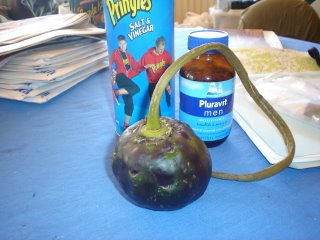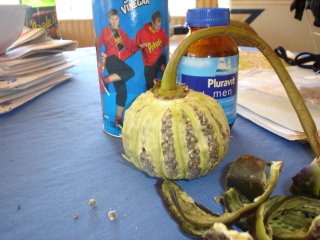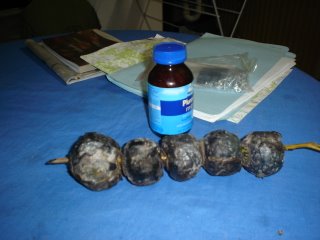



The other day old BR asked me to drop her down at the local billabong. This is just the kind of humbug that sometimes annoys me, but as a peace offering BR gave me the biggest yarlbun I've ever seen! (Which made it all okay.)
Yarlbun is the Marra name for this bush tucker - it's the fruit of the water lily, a big seed pod that you get by going into the water and feeling around for under the surface. And these pictures show you what you can do with it.
The first pic shows the giant yarlbun intact. Next, I've peeled the skin off, revealing the inside part bulging with lily seeds. Now, you can eat it just like that, like an apple, but as you'll see in the third picture, I've actually emptied all the seeds into a bowl. And that's how I ate it, just like cereal. Very tasty, and I'm sure very healthy. And the last pic shows a row of yarlbun that had been roasted on the fire - another good way to eat it.
And thus endeth your first lesson on bush tucker. Acknowledgements to old BR (and all the other people out here that have taught me about this kind of thing).
And for a bit of language lesson: this bush tucker is called yarlbun in Marra and Alawa, dattam in Rembarrnga, dhatam in Ritharrngu/Waagilak, ma-dhatdam in Ngandi and ayag in Nunggubuyu.
Comments
It makes no sense!!